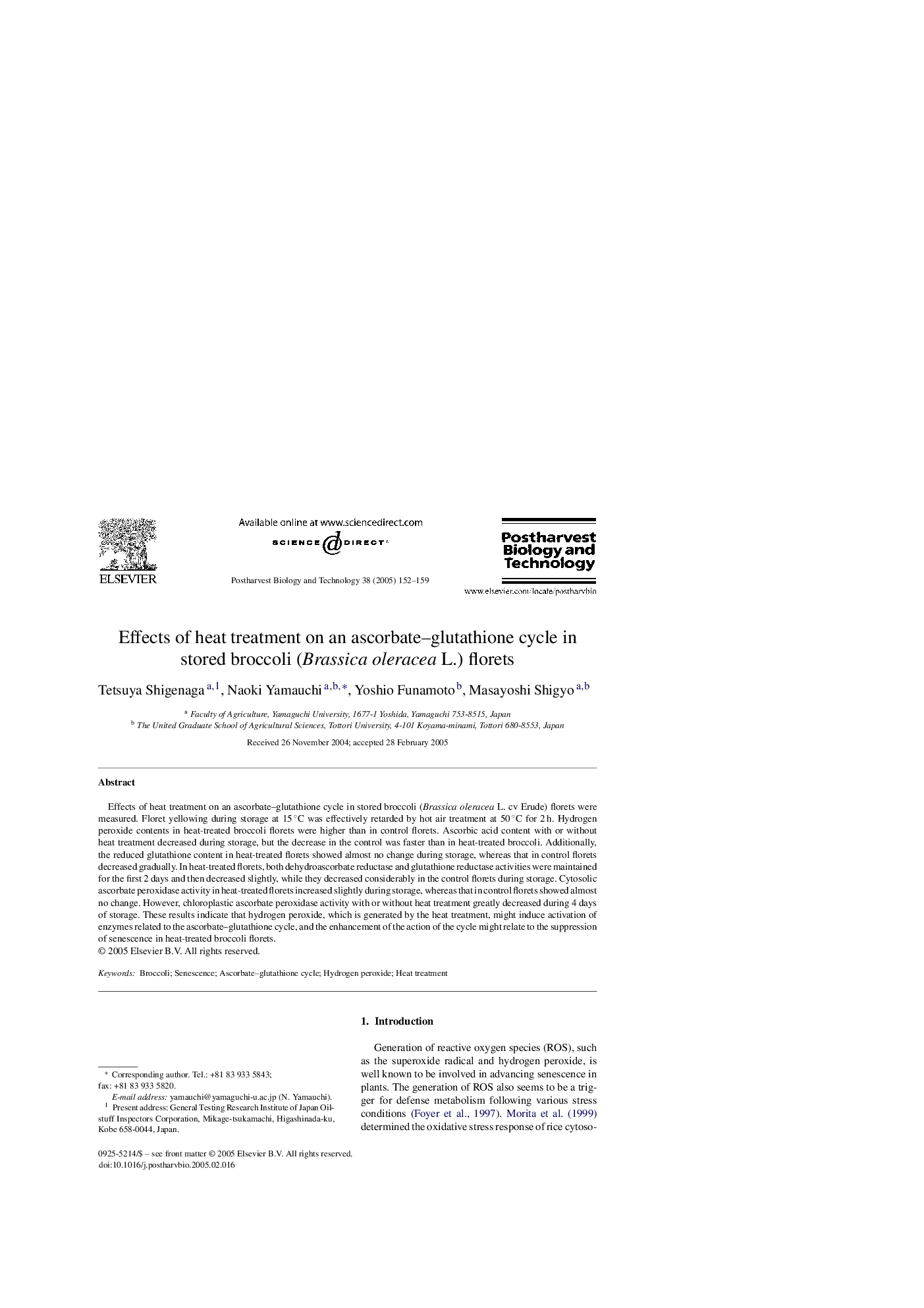| Article ID | Journal | Published Year | Pages | File Type |
|---|---|---|---|---|
| 9475209 | Postharvest Biology and Technology | 2005 | 8 Pages |
Abstract
Effects of heat treatment on an ascorbate-glutathione cycle in stored broccoli (Brassica oleracea L. cv Erude) florets were measured. Floret yellowing during storage at 15 °C was effectively retarded by hot air treatment at 50 °C for 2 h. Hydrogen peroxide contents in heat-treated broccoli florets were higher than in control florets. Ascorbic acid content with or without heat treatment decreased during storage, but the decrease in the control was faster than in heat-treated broccoli. Additionally, the reduced glutathione content in heat-treated florets showed almost no change during storage, whereas that in control florets decreased gradually. In heat-treated florets, both dehydroascorbate reductase and glutathione reductase activities were maintained for the first 2 days and then decreased slightly, while they decreased considerably in the control florets during storage. Cytosolic ascorbate peroxidase activity in heat-treated florets increased slightly during storage, whereas that in control florets showed almost no change. However, chloroplastic ascorbate peroxidase activity with or without heat treatment greatly decreased during 4 days of storage. These results indicate that hydrogen peroxide, which is generated by the heat treatment, might induce activation of enzymes related to the ascorbate-glutathione cycle, and the enhancement of the action of the cycle might relate to the suppression of senescence in heat-treated broccoli florets.
Related Topics
Life Sciences
Agricultural and Biological Sciences
Agronomy and Crop Science
Authors
Tetsuya Shigenaga, Naoki Yamauchi, Yoshio Funamoto, Masayoshi Shigyo,
